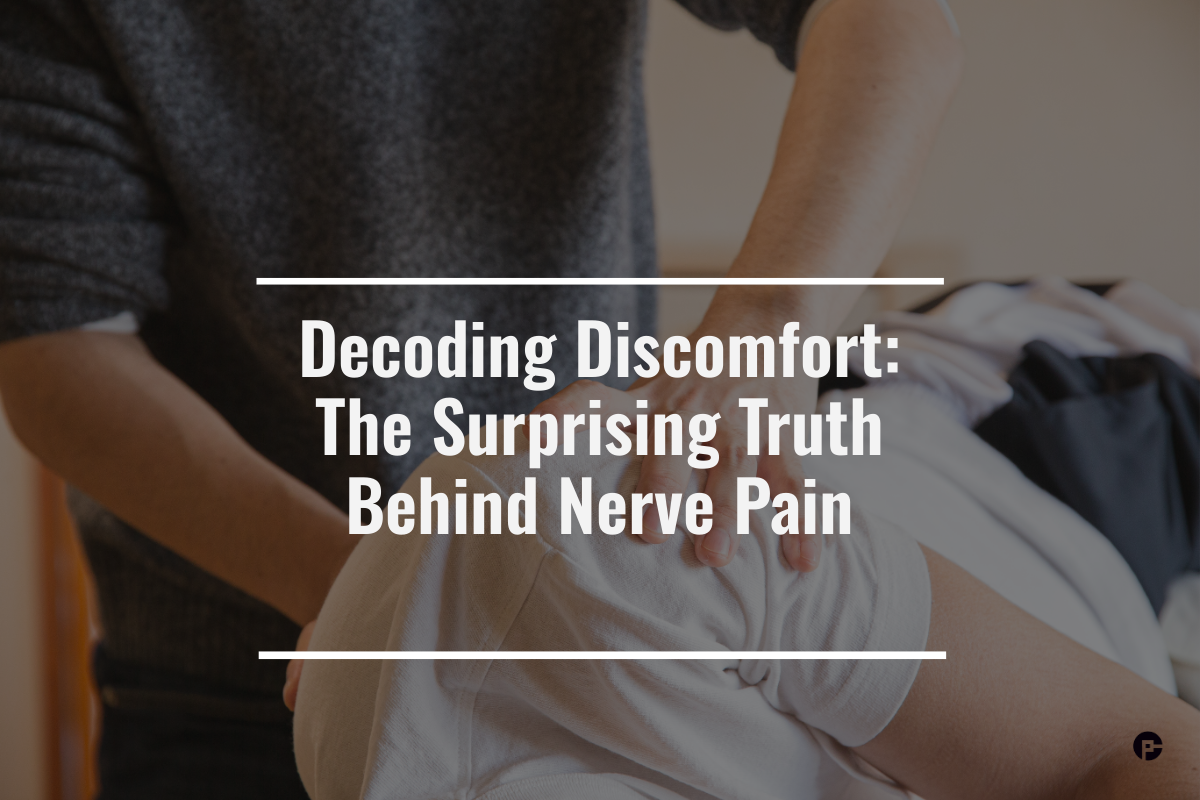© Copyright 2023 Caliber PT PLLC - All Rights Reserved
Understanding the Factors Behind Worsening Nerve Pain After Physical Therapy
Nerve pain can be a challenging condition to manage, and you may experience pain after physical therapy. One of the main reasons is nerve irritation and inflammation during therapy. The exercises and movements performed during physical therapy sessions can put stress on the nerves, leading to increased pain and discomfort.
Overexertion or improper technique during physical therapy may also exacerbate nerve pain. Pushing yourself too hard or using incorrect form can strain the nerves and cause them to become more sensitive. This heightened sensitivity can result in a temporary worsening of pain.
It's important to understand these factors so that you can take appropriate steps to manage your nerve pain effectively during and after physical therapy. By being aware of potential causes, you can work with your PT to modify your treatment plan and ensure that you are using proper technique to minimize any worsening nerve pain.
The Role of Nerve Regeneration and Healing
Nerve regeneration and healing play a vital role in the post-physical therapy period. Understanding this process can help alleviate concerns about worsening nerve pain and discomfort.
Nerve Regeneration and Healing Process
After physical therapy, the body initiates a healing process that involves nerve regeneration. This is a natural response to the stress and strain placed on the nerves during physical therapy treatments. During the regeneration process, nerve fibers may become more sensitive, leading to increased pain. While this temporary increase in pain can be concerning, it is actually a positive sign that the nerves are healing and regenerating.
Interestingly, a recent study published in the European journal of physical and rehabilitation medicine offered some encouraging insights into this process. The findings suggested that intensifying the level of physical activity and mobility can potentially decrease neuropathic pain. This was particularly observed in patients with moderate to high levels of mobility, where the scale of pain decreased as mobility increased.
The heightened pain experienced during nerve regeneration is often referred to as healing pain or recovery pain. It indicates that the damaged nerves are repairing themselves and gradually returning to their normal function. This process takes time, as nerves regenerate at a slow rate compared to other tissues in the body. Marcondes' team's research offers a hopeful perspective on this journey, opening up new avenues for managing recovery pain during nerve regeneration.
Patience is Key
During the healing process, it is important to be patient and understand that temporary worsening of pain is normal. Nerve regeneration takes time, and it is crucial to allow the body to heal at its own pace. It's important not to get discouraged by any setbacks or increased discomfort along the way.
Continuing with prescribed exercises and following the guidance of a experienced physical therapist can aid in the healing process. Your physical therapist will provide you with specific exercises designed to promote nerve regeneration while minimizing further irritation or damage. By adhering to your rehabilitation plan and gradually progressing through your exercises, you can support your body's natural healing abilities.
Remember, everyone's healing journey is unique, so it's essential not to compare your progress with others'. Stay committed, trust the process, and have faith in your body's ability to heal itself. With time and patience, you will begin to reduce pain as your nerves regenerate and recover their normal function.
Effective Management of Discomfort and Worsening Nerve Pain
While it might feel that physical therapy makes pain worse, effective communication with your PT, a focus on proper technique and gradual progression can help manage discomfort and nerve pain.
Communication with Your Physical Therapist
Openly communicating any discomfort or worsening pain with your physical therapist is essential. They are there to support you throughout the healing process and can modify your treatment plan accordingly. By sharing your concerns, they can assess your condition, provide guidance, and make necessary adjustments to alleviate nerve pain.
Your physical therapist may suggest alternative exercises that target the affected area without exacerbating the pain. They may also recommend modifications in intensity, duration, or frequency of certain movements to ensure optimal healing while minimizing discomfort. Remember, your physical therapist is an expert in their field and has the knowledge and experience to guide you through this process.
Proper Technique and Gradual Progression
Using proper technique during physical therapy exercises is important for managing nerve pain and increasing mobility effectively. Improper form or overexertion can strain the nerves and lead to increased pain. It's essential to pay attention to your body's signals and avoid pushing beyond your limits.
Working with a licensed physical therapist ensures that you learn the correct techniques for each exercise. They will teach you how to engage the appropriate muscles, maintain proper alignment, and avoid unnecessary strain on the nerves. Following their guidance will help with pain management.
Gradual progression is also key in managing nerve pain during physical therapy. Pushing too hard or progressing too quickly can overwhelm the nerves, leading to increased discomfort. Your physical therapist will design a personalized program that gradually increases in intensity as your body adapts and heals. By following this progressive approach, you give your nerves time to adjust without causing additional aggravation.
By actively communicating with your physical therapist and focusing on proper technique and gradual progression, you can effectively manage discomfort and minimize worsening nerve pain during physical therapy sessions. Remember, your therapist is there to support you and guide you through the healing process.
Managing Nerve Pain and Soreness After Physical Therapy
Managing nerve pain and soreness after physical therapy requires a comprehensive approach that addresses the underlying factors contributing to the discomfort. By understanding the potential causes of worsening pain, such as nerve irritation, inflammation, overexertion, or improper technique, you can take proactive steps to alleviate your symptoms.
Open communication with your physical therapist is crucial in managing nerve pain effectively. They can modify your treatment plan, suggest alternative exercises, and provide guidance throughout the healing process. Additionally, using proper technique during physical therapy exercises and allowing for gradual progression can help prevent further irritation and minimize discomfort.
Remember that everyone's healing journey is unique, and it's important to be patient with yourself. Nerve regeneration takes time, but by following the guidance of your physical therapist and staying committed to your treatment plan, you can support your body's natural healing processes and find relief from nerve pain.
If you’re seeking expert guidance and comprehensive care for physical therapy, look no further than Caliber PT. With a dedicated team of highly trained professionals, Caliber PT ensures each patient receives individualized treatment plans designed to meet their unique needs and goals. Contact us today.
Sources:
Marcondes, B., Sreepathi, S., Markowski, J., Nguyen, D., Stock, S., Carvalho, S., Tate, D., Zafonte, R., Morse, L., & Fregni, F. (2016). Pain severity and mobility one year after spinal cord injury: a multicenter, cross-sectional study.. European journal of physical and rehabilitation medicine, 52 5, 630-636.
See Also
Anticipating Discomfort: Post-Physical Therapy Expectations
Optimizing Healing after Orthopedic Surgery: Pre and Post-Operative Therapy
Getting Ready for Initial Physical Therapy: What to Anticipate
Decoding Contrasts and Advantages: Sports Physical Therapist vs Regular Therapist for Athletes
Exploring GPP Workouts: Meaning, Advantages, and Exercise Examples
Disclaimer: The information provided is for educational and informational purposes only. It is not intended to be a substitute for professional medical advice, diagnosis, or treatment. Always seek the guidance of your physician or qualified healthcare provider with any questions you may have regarding a medical condition. Never disregard professional medical advice or delay in seeking it because of something you have read on this blog. Reliance on any information provided by this blog is solely at your own risk. The authors and publishers of this blog are not responsible for any errors or omissions in the content or for any outcomes resulting from the use of the information provided.


